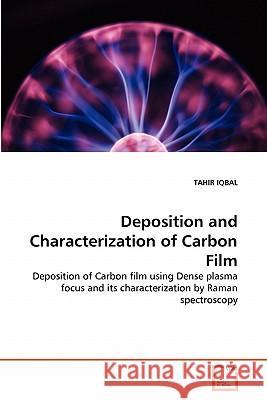Deposition and Characterization of Carbon Film » książka
Deposition and Characterization of Carbon Film
ISBN-13: 9783639348729 / Angielski / Miękka / 2011 / 68 str.
The deposition of amorphous carbon films is made on Silicon substrate Si (100), using a low energy (1.4 kJ) dense plasma focus (DPF). Silicon (100) substrates are placed in front of the graphite inserted anode at 5 cm distance for different angular positions with respect to the anode axis. The films are deposited using 25 focus shots at an optimum pressure of 0.75 mbar, by using argon as medium gas. The structural information of these deposited films is carried out by using Raman Spectroscopy Raman which shows the deposition of both graphite type trigonal sp DEGREES2 and diamond type tetragonal sp DEGREES3 films. Band intensity ratio (sp DEGREES3/sp DEGREES2) indicates that diamond like character of amorphous carbon is dominant.The surface morphology is studied by using Scanning Electron Microscope (SEM). Micrographs of the treated samples show that a dark grayish DLC layer. The irradiation by energetic high fluence ions results in surface swelling of the substrate increasing its roughness. With higher fluence, the surface damage is significant as a consequence of the excessive energy
The deposition of amorphous carbon films is made on Silicon substrate Si (100), using a low energy (1.4 kJ) dense plasma focus (DPF). Silicon (100) substrates are placed in front of the graphite inserted anode at 5 cm distance for different angular positions with respect to the anode axis. The films are deposited using 25 focus shots at an optimum pressure of 0.75 mbar, by using argon as medium gas. The structural information of these deposited films is carried out by using Raman Spectroscopy Raman which shows the deposition of both graphite type trigonal sp^2 and diamond type tetragonal sp^3 films. Band intensity ratio (sp^3/sp^2) indicates that diamond like character of amorphous carbon is dominant.The surface morphology is studied by using Scanning Electron Microscope (SEM). Micrographs of the treated samples show that a dark grayish DLC layer. The irradiation by energetic high fluence ions results in surface swelling of the substrate increasing its roughness. With higher fluence, the surface damage is significant as a consequence of the excessive energy deposited on the substrate.











